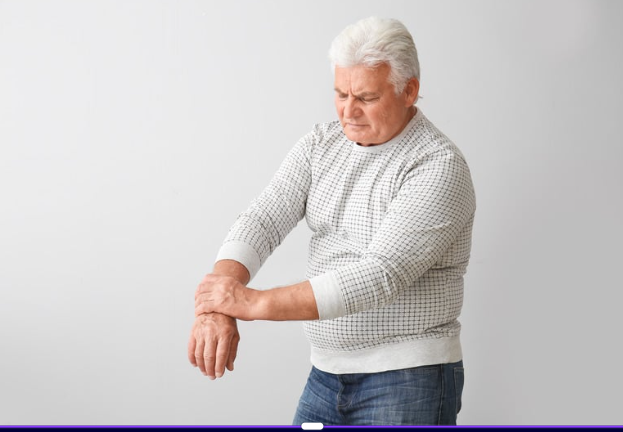Parkinson’s Disease
Definition of Parkinson’s Disease Parkinson’s disease affects the nerve cells responsible for controlling movement. People with this condition experience a decline in dopamine production due to the degeneration of dopaminergic nerve cells, leading to a loss of motor control and balance. Causes of Parkinson’s Disease The exact cause of Parkinson’s disease remains unknown. However, there are several key factors that can contribute to the onset of the disease:- Genetics: Researchers have identified specific genetic mutations that may lead to the development of Parkinson’s disease.
- Environment: Environmental factors can increase the risk of developing the disease later in life, although the risk is relatively small.

Risk Factors for Parkinson’s Disease
The risk factors for Parkinson’s disease include:
- Age: Individuals over the age of 60 are at a higher risk of developing the disease.
- Family History: Having parents or siblings with a history of Parkinson’s increases the likelihood of developing the condition.
- Gender: Men are more likely to develop Parkinson’s than women.
- Exposure to Toxins: Exposure to certain environmental toxins can increase the risk of Parkinson’s disease.

Symptoms of Parkinson’s Disease
The symptoms experienced by individuals with Parkinson’s disease vary, but physical conditions typically worsen over time. However, the common signs of Parkinson’s disease include:- Tremors: Tremors often begin in the hands, including the fingers, and may occur even when at rest.
- Slowed Movement (Bradykinesia): The disease can cause the body’s movements to slow down over time.
- Stiff Muscles: Almost throughout the body, muscles become stiff, often leading to pain.
- Posture and Balance Problems: The body may appear hunched, and individuals may experience difficulty maintaining balance during activities.
- Loss of Reflexes: There is a decline in reflex abilities, such as blinking, smiling, or swinging arms while walking.
- Speech Changes: Individuals may experience changes in speech, such as speaking in a soft voice, rapid intonation, or hesitation before speaking.
- Writing Changes: Writing becomes difficult, and the handwriting may appear smaller.


According to The Parkinson’s Disease Foundation, Parkinson’s disease symptoms are commonly categorized into 5 stages:
- Stage 1: Symptoms are mild and do not significantly affect the quality of life.
- Stage 2: Symptoms worsen, and individuals find it difficult to perform daily activities, requiring more time to complete them.
- Stage 3 (Mid-stage): Individuals begin to lose balance, movements slow down, and they are more prone to falls. Simple daily activities such as dressing, eating, and brushing teeth become increasingly difficult.
- Stage 4: Symptoms are more severe. Individuals require assistance to walk and perform daily tasks.
- Stage 5 (Advanced Stage): Individuals are no longer able to walk and require lifelong assistance.

Complications of Parkinson’s Disease
The following complications may arise if the symptoms of Parkinson’s disease are not properly managed:
Difficulty Thinking:
This typically occurs in the later stages of the disease. Cognitive problems may not respond well to medications.Depression and Emotional Changes:
Individuals with Parkinson’s may experience depression and other emotional changes, such as fear, anxiety, or a loss of motivation.Chewing and Eating Problems:
In the later stages, Parkinson’s affects the muscles in the mouth, making chewing more difficult.Sleep Problems and Sleep Disorders:
Individuals may experience sleep disturbances, including frequent waking throughout the night, waking up early, or excessive daytime sleepiness.Bladder Problems:
Parkinson’s can cause bladder issues, including incontinence or difficulty urinating.Constipation:
Many individuals with Parkinson’s experience constipation due to slower movement in the digestive tract.
Prevention of Parkinson’s Disease
Currently, there is no definitive method for preventing Parkinson’s disease. However, some studies suggest that individuals who consume caffeine are less likely to develop Parkinson’s compared to those who do not drink caffeinated beverages.
Recognizing Early Symptoms of Parkinson’s Disease
- Tremors: Shaking or trembling, often starting in one hand or limb.
- Slowed Movements: Movements become slower and more deliberate over time.
- Balance Problems: Difficulty maintaining balance and a tendency to fall.
- Reduced Reflexes: Reflexes, such as blinking or smiling, may decrease.
- Speech Difficulties: Speech may become softer or slurred, and it may be harder to communicate.
- Muscle Stiffness: Muscles may feel rigid or tight, leading to discomfort or pain.
Early recognition and intervention can help manage symptoms and improve quality of life

Treatment for Parkinson’s Disease
Parkinson’s disease cannot be cured. However, symptoms can be managed through medication and lifestyle changes. Medications can help reduce symptoms, and maintaining a healthy lifestyle can improve overall well-being. In advanced stages, doctors may recommend surgery as a treatment option.
In some cases, physical therapy is also used. The goal of physical therapy is to maintain body balance and help improve speech and motor functions, enhancing the patient’s quality of life.


Parkinson’s Disease
Parkinson’s disease is a degenerative neurological disorder, with the most common symptoms being tremors at rest on one side of the body, difficulty initiating movement, and muscle stiffness. The cause of Parkinson’s disease is a deficiency in the neurotransmitter dopamine within the nervous system.
SOP Subarashi’s Role in Parkinson’s Disease
SOP Subarashi can aid in the regeneration of embryonic stem cells, stimulating the production of dopamine-producing neurons that are deficient in Parkinson’s patients. These replacement cells help improve motor function, providing support for the restoration of movement and balance in individuals affected by the disease.

